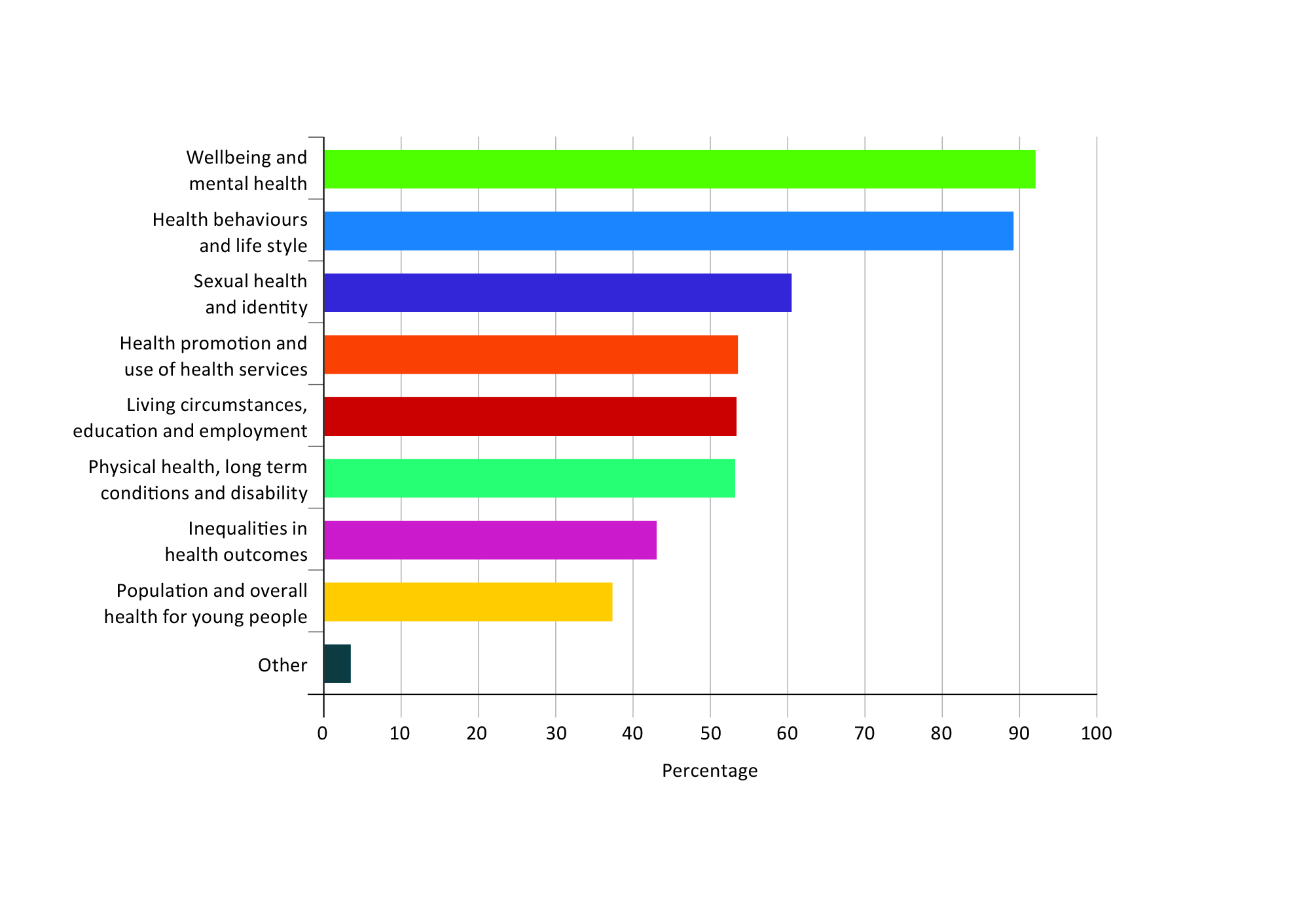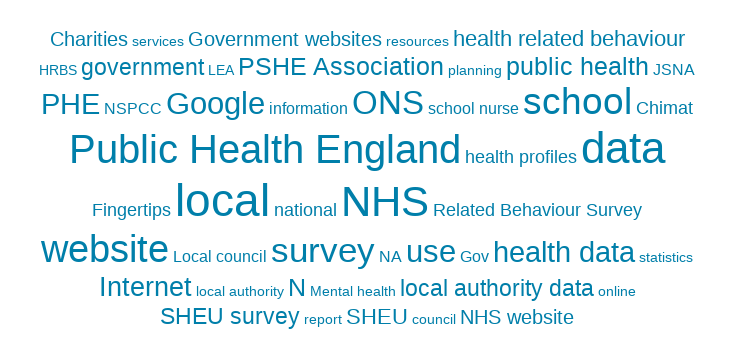Association for Young People’s Health is already the author of a well-known and widely used biennial compendium of youth health statistics called Key Data on Young People. Together with the PSHE Association, we are using Key Data to create youth and teacher friendly resources to underpin health education in secondary schools.
We sent out a survey to the PSHE Association network during the summer term to find out which topics were most likely to be relevant, and how teachers might want the information to be made available to them. A total of 594 teachers and other staff responded (thank you to all who took the time to do so!) and the results were both informative and interesting.
Which health education topics might be most relevant?

We were interested in aspects of young people’s health for which teachers might need the most support when – for example – planning lessons, or understanding more about the school community.
We gave a list of topics, and the chart shows the ones that respondents thought most important. Top of the list were wellbeing and mental health, and health behaviours (such as smoking, drinking and drug use). But all the topics we suggested got a fairly enthusiastic response. Teachers also mentioned the importance of domestic abuse data, relationships, safeguarding, disability and lifestyle, and broader topics that sit behind health such as welfare, poverty, human rights, power, capitalism, ‘social health’, work, finances and stress.
Where do teachers get their health education information from?

The word cloud summarises the current kinds of information used by people delivering health education. These are all good sources, but they are spread around and sometimes hard to access.
We asked what prevented respondents from accessing and using data (when planning health education), the most popular response was “I don’t really know where to look”. As one said, “You have to sift through a lot of information, charts, graphs etc to find relevant statistics that are 'child friendly'”.
So what might help?
A trusted website and visual resources were top of the list of things that would be helpful; a central starting point, to help navigating all the information.
But respondents also emphasised the importance of being able to get hold of local data, to compare to the national data, and also said that the information needed to be in a ‘child friendly’ format, ready for use in the class.
Teachers emphasised how little preparation time they have available, and the need for support in how to use the information, not just access to statistics. They also noted the importance of information being current and relevant: “…you don’t want to become complacent as data changes quite rapidly, so it would need to be an updated and current list of resources and unbiased.” And the provenance and reliability of data is very important; “Data information / sources I sometimes see being shared in education can be dubious, everything should be backed up with info about where it came from, where published, date etc.”. This leaves us with the challenge to produce a new tool that tackles these issues. We are therefore delighted that funding from the Health Foundation helps us take a first step in designing a new ‘signposting’ website on youth health data. We’re excited to be working together on this project and will share the results of our initial work as soon as we can.
For more information
For any questions about this project or about AYPH’s work more generally, please:
- Email Ann Hagell ann@youngpeopleshealth.org.uk or Jeremy Sachs jeremy@youngpeopleshealth.org.uk.
- Visit our website at www.youngpeopleshealth.org.uk.
- Follow us on twitter @AYPHcharity.
